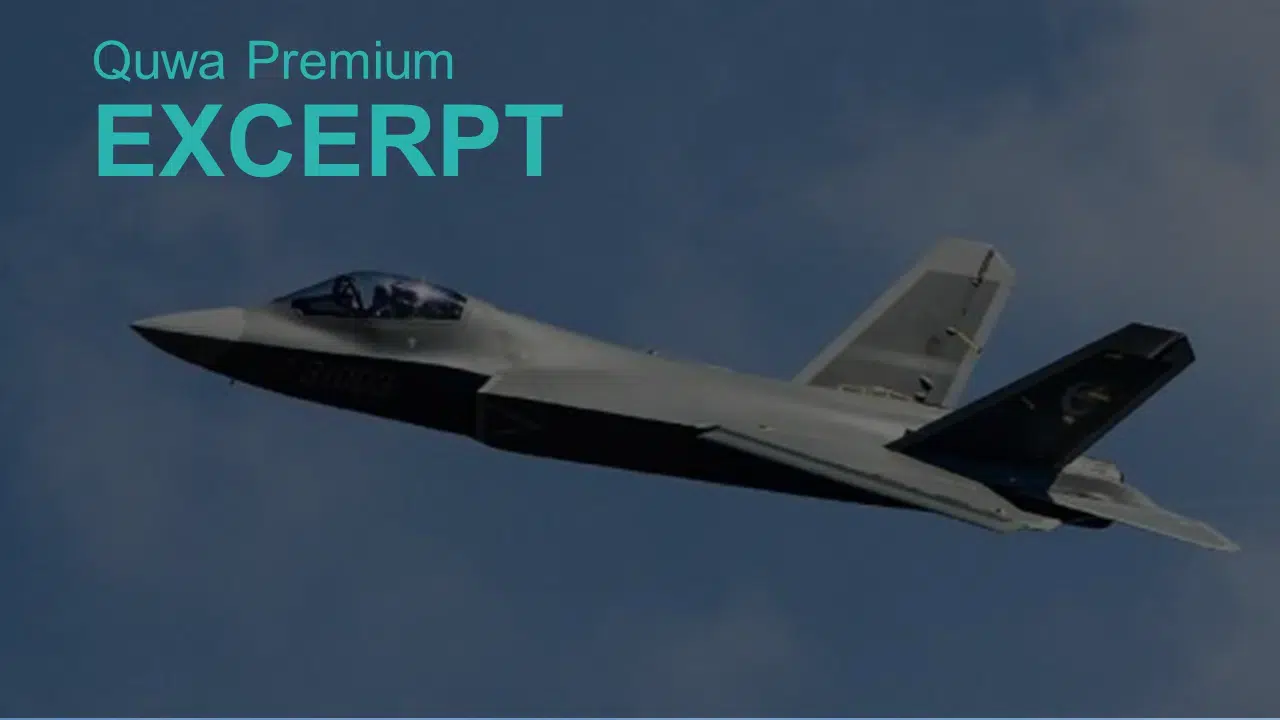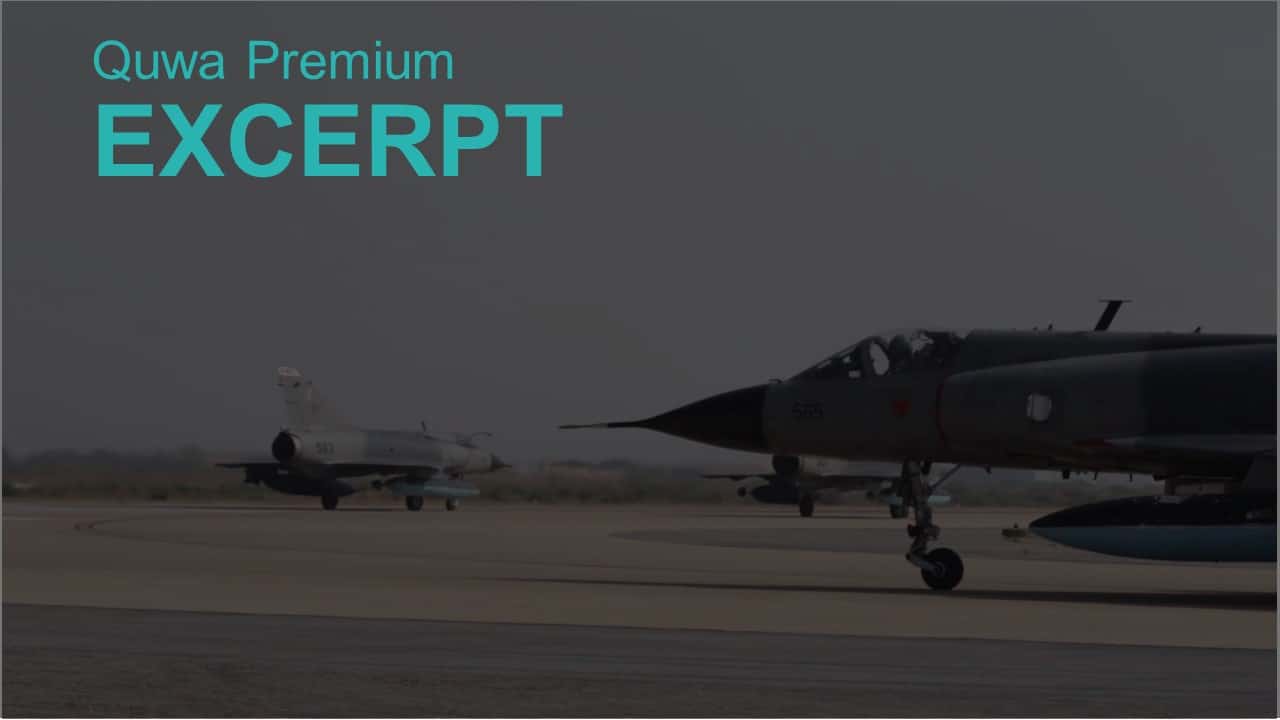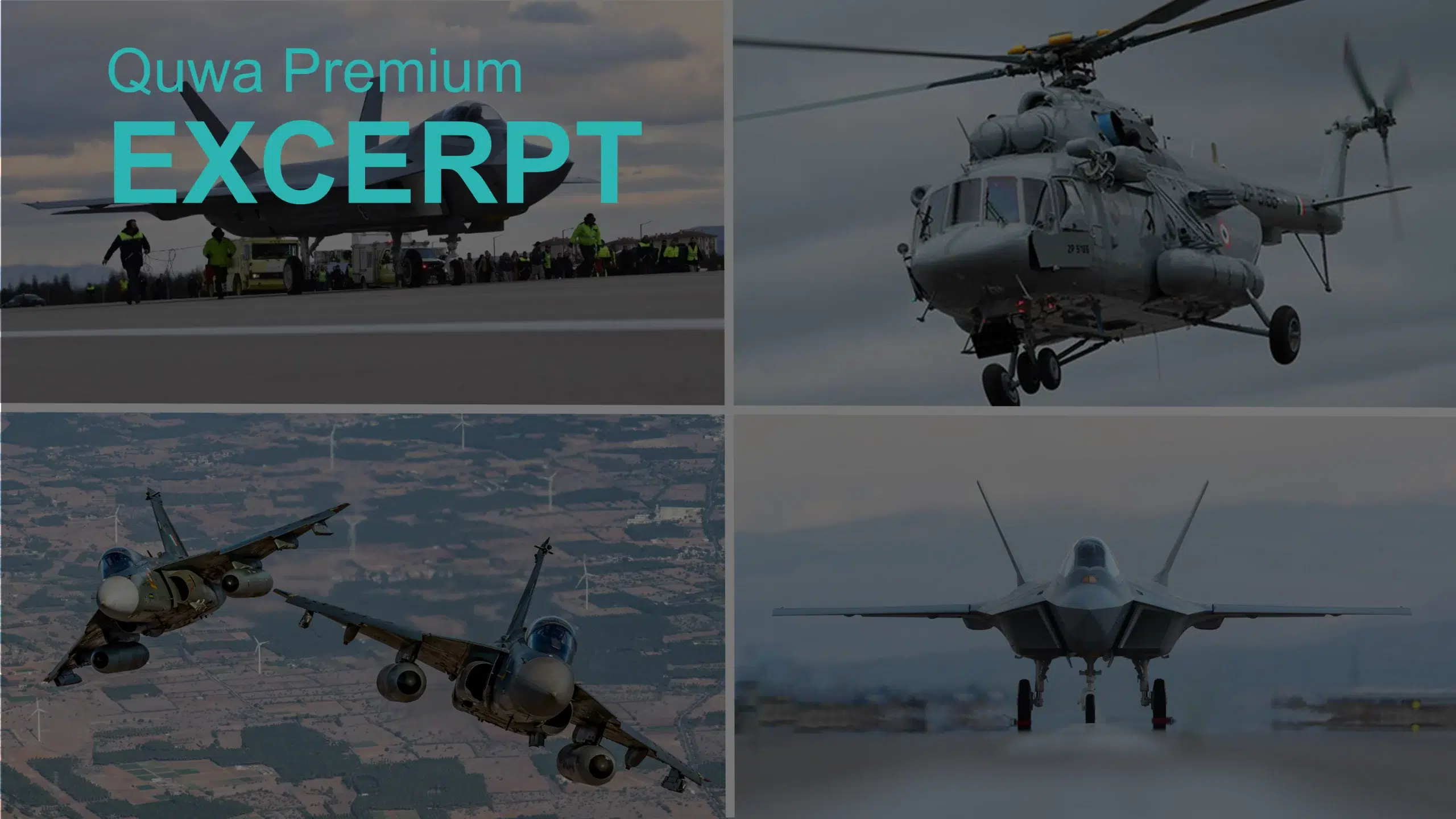5190Views

Pakistan Air Force Announces Plans to Procure J-31 Stealth Fighters Quwa Premium
On 03 January 2024, the Pakistan Air Force’s (PAF) Chief of Air Staff (CAS), Air Chief Marshal Zaheer Ahmed Baber Sidhu, announced that the PAF will be acquiring the J-31/FC-31 stealth fighter.
In an official press release, the PAF stated, “The foundation for acquiring the J-31 stealth fighter aircraft has already been laid, which is all set to become part of the PAF’s fleet in the near future.”
The CAS announced the PAF’s plans to procure the Chinese next-generation fighter aircraft (NGFA) during a recent ceremony celebrating the inducting of several systems in the PAF fleet, such as the J-10CE Dragon multirole fighter, ex-Belgian C-130H Hercules airlifters, and other auxiliary aircraft.
Currently, the PAF has not revealed its timeline or other specific procurement details. However, the PAF’s announcement marks its first official direction for an NGFA since Project AZM, an in-house program aimed at developing an original NGFA for the PAF.
Project AZM’s in-house NGFA program has likely been shelved, thus prompting the PAF leadership to look towards preexisting overseas programs for solutions. In August 2023, the Turkish government indicated that Pakistan was engaging it to join the TF-X KAAN program. It is unclear how the PAF’s announcement to induct the J-31 will impact its apparent interest in the Turkish KAAN.
Background: Shenyang J-31
Developed by Shenyang Aircraft Corporation (SAC), the J-31 is a twin-engine stealth fighter originally built and promoted for export. Following the demonstrator’s maiden test flight in 2012, the J-31 underwent numerous design changes, resulting in a new prototype flying in 2016. This new version was also equipped with indigenous WS-13 turbofans, replacing the Klimov RD-93s in the first prototype.
AVIC marketed the J-31 as a multirole combat aircraft. Its use of angular shapes in the airframe, internal weapons bay, and certain materials showed a focus on stealth/low observability (LO) on radar. It offered an internal and external payload capacity of 2,000 kg and 6,000 kg, respectively, a top speed of Mach 1.8, and a combat radius of 1,200 km. It has a reported maximum take-off weight (MTOW) of 25,000 kg.
In terms of subsystems, the J-31 would hose an active electronically scanned array (AESA) radar, helmet-mounted display and sight (HMD/S) system, in-flight refueling (IFR) probe, integrated electronic counter-measures (ECM) suite, infrared search and track (IRST), and electro-optical targeting system (EOTS).
The J-31’s munitions suite will comprise of long-range air-to-air missiles (LRAAM) like the PL-15E and SD-10, the PL-10E high off-boresight (HOBS) AAM, FT-series precision-guided bombs (PGB), and, eventually, compact air-launched cruise missiles (ALCM) and loitering munitions.
AVIC marketed the J-31 as a versatile solution, one with credible stealth characteristics paired with useful weapons carrying capacity and reach. The stealth element aside, the size and capability of the J-31 still made it a viable solution for countries that could not access a Rafale, Eurofighter Typhoon, or F/A-18E/F-type medium-to-heavyweight fighter solution.
However, the J-31 program had an unclear future, especially since AVIC promoted it as a solely export solution. However, in 2018, the People’s Liberation Army Navy (PLAN) adopted the platform the basis of its next-generation carrier fighter, designated J-35. The first prototype of the J-35 broke cover in 2021 and exhibited additional design changes, especially in its front fuselage and canopy. The final production version of the J-35 is also expected to house new turbofan engines. It is possible that the work going into the carrierborne J-35 will extend into a new land-based variant for export.
Why is Pakistan Procuring the J-31?
On the surface, one could presume that the PAF found a feasible solution in the J-31 for its NGFA needs. It would not have access to a better fighter in terms of cost, availability, and capability in one package. Likewise, the J-31 is also free of regulatory pressure from the United States or Europe. Finally, thanks to the J-10CE and JF-17C programs, the PAF will already have an existing pool of compatible munitions.
However, there is more to the J-31 than its NGFA label and its stealth capabilities. For example, the J-31 would offer a greater payload and range than any of the PAF’s current fighters, therefore improving the PAF’s reach and strike capabilities. The latter would also draw on a built-in electro-optical system via the EOTS, giving the J-31 greater versatility in the ground attack mission than any PAF asset today.
The first question about the PAF’s intentions is the timing. While the PAF CAS stated that the J-31 will join the PAF fleet in the “near future,” the aircraft is still under development. Based on AVIC’s estimates about the time it would take to move the J-31 from demonstrator to production-ready fighter, Pakistan could receive its first batch of J-31s from 2028 to 2030…
End of Excerpt (973/2,150 words)
You can read the complete article by logging in (click here) or subscribing to Quwa Premium (click here).
For more insights on the Pakistan Air Force:


